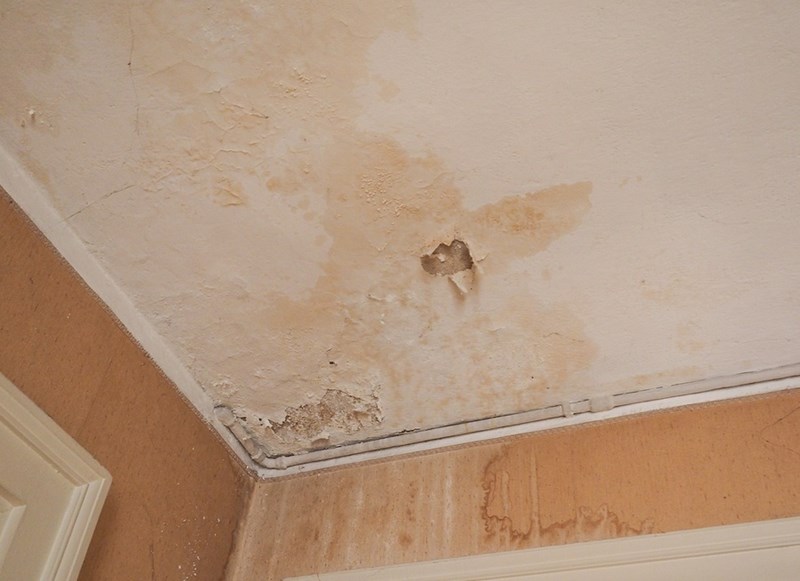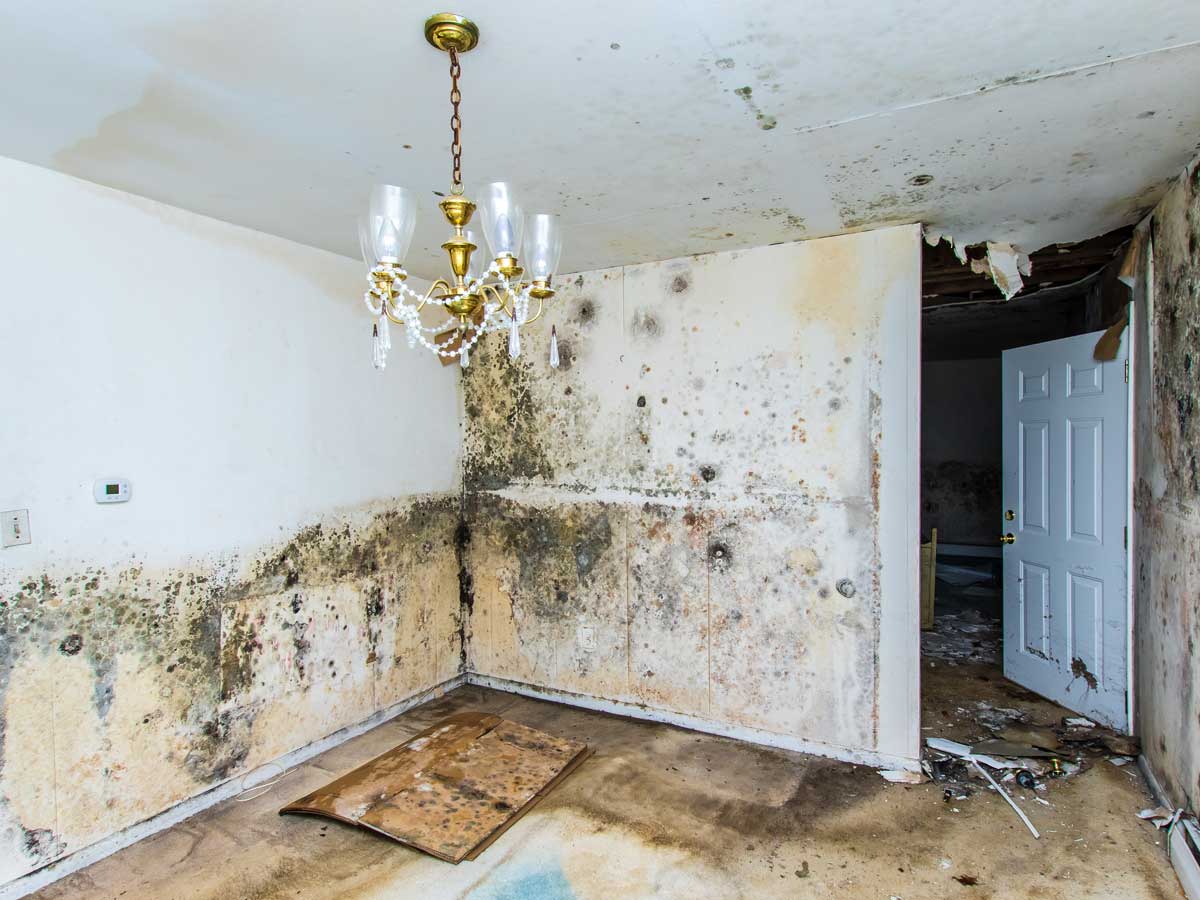Water Damage Restoration Specialists Ready to Fix Any Issue Fast
Wiki Article
The Process of Water Damage Cleaning: Guaranteeing Your Home Is Restored Properly
Water damages can be a daunting difficulty for home owners, demanding a careful and organized cleanup procedure to restore safety and performance. A thorough evaluation is vital to recognize the level of the damage and establish the suitable removal procedures. Following this, effective water removal techniques play an essential role in minimizing further injury. However, the nuances of drying out, disinfecting, and eventual repair are just as crucial and usually ignored. Recognizing these stages can make a considerable difference in the outcome of your home's reconstruction, triggering a closer check out what each action involves.Evaluating the Damage
Upon discovering water damages, the primary step is to extensively analyze the extent of the effect. This first analysis is important, as it helps determine the needed steps for efficient cleaning and reconstruction. Begin by inspecting the impacted locations, including wall surfaces, ceilings, floorings, and personal valuables, to identify the source of the water intrusion, whether from flooding, leaks, or condensation.Documenting the damage is important for both insurance policy cases and preparing restoration initiatives - damage restoration services. Use photos and written notes to catch the severity of the damage, keeping in mind any kind of damaged architectural aspects and products. Pay unique interest to areas that may not be instantly noticeable, such as behind wall surfaces and under carpets, as concealed dampness can lead to additional complications, including mold growth
In addition, examine the timeline of the water direct exposure. Ultimately, a comprehensive evaluation lays the groundwork for a successful water damages cleanup process, guaranteeing that all influenced areas are attended to effectively and extensively.
Water Extraction Techniques

Experts typically employ completely submersible pumps for bigger quantities of water, which can promptly relieve flooding in cellars or various other impacted areas. For smaller quantities, wet/dry vacuums are typically used to remove residual wetness from carpets and hard surfaces. Additionally, utilizing portable extractors allows for targeted removal in confined rooms or areas with delicate products.
In instances of polluted water, such as sewer or floodwater, advanced removal strategies may involve using biohazard equipment to make sure safety and conformity with wellness policies. High-powered removal tools are essential in decreasing water retention in architectural products, which can lead to mold growth and structural deterioration if not attended to quickly.
Eventually, the efficiency of water extraction techniques plays a crucial function in the general success of the water damages cleaning procedure, laying the foundation for subsequent reconstruction initiatives.
Drying and Dehumidification
Once standing water has actually been successfully drawn out, the following important stage in the water damages cleanup procedure is drying and dehumidification. This action is vital to stop more damages and mold and mildew development, which can occur within 24 to 2 days in damp settings.To accomplish reliable drying out, specific equipment such as industrial-grade air moving companies and dehumidifiers is used. Air movers distribute air throughout damp surface areas, boosting dissipation prices, while dehumidifiers decrease humidity levels in the air, promoting a helpful atmosphere for drying out. The mix of these devices makes certain that wetness is attracted out from home furnishings, wall surfaces, and floors, permitting them to completely dry completely.
It is very important to keep an eye on the drying procedure closely. Specialists commonly utilize dampness meters to examine the moisture material in various materials, making certain that all influenced locations get to acceptable dry skin levels. This careful approach assists to stop surprise moisture pockets that can result in structural damages or harmful mold and mildew growth.

Cleansing and Sterilizing
After the drying and dehumidification stage is full, the next essential action in water damages cleanup is cleaning up and sanitizing the affected locations. This procedure is essential to avoid the development of mold and mildew, bacteria, and various other microorganisms that grow in wet environments.The cleansing phase typically includes eliminating any kind of particles, dust, and contaminants from surface areas utilizing specialized cleansing representatives. For tough surfaces, a mix of soap and water or industrial cleansing items is commonly used. Soft products, such as upholstery and carpetings, might call for more substantial cleansing techniques, including steam cleansing or deep extraction techniques, to make certain comprehensive cleanliness.

Sanitizing follows cleansing, using EPA-approved anti-bacterials to remove damaging microorganisms. This action is necessary, especially in areas that may have entered into call with floodwaters or sewer, as these sources can present major health risks.
Furthermore, it is very important to attend to any continuing to be odors, which may call for the use of smell neutralizers or sophisticated techniques like ozone therapy. Proper cleansing and sanitizing not only recover the safety and security and health of your home yet likewise lay the groundwork for successful repair and fixings in subsequent stages of the water damage clean-up process.
Repair and Repairs

When the analysis is complete, restoration efforts can start. Additionally, floor covering might require comparable attention, depending on the degree of water direct exposure.
It is critical to involve skilled remediation experts throughout this procedure, as they have the expertise to deal with intricate repairs efficiently. They can aid minimize potential future problems, such as mold growth or architectural instability, hence making sure a water damage repair services risk-free and habitable living setting. Ultimately, effective reconstruction and repair work bring back the home's stability and enhance its total worth.
Final Thought
Finally, the procedure of water damages cleanup is important for bring back a home to its pre-damage condition. Each phase, from analyzing the damages to carrying out efficient water removal strategies, followed by extensive drying, sterilizing, and essential repairs, plays an essential function in making sure safety and conformity with structure criteria. Efficient implementation of these steps not just alleviates immediate damage yet also boosts the long-term stability and worth of the residential property.Water damage can be an overwhelming challenge for homeowners, necessitating a careful and organized cleaning process to recover safety and security and functionality. Ultimately, a thorough analysis lays the groundwork for an effective water damage cleanup procedure, ensuring that all influenced areas are dealt with efficiently and thoroughly.
Reliable water extraction strategies are vital in reducing damages and preventing more problems following a water breach occasion.In verdict, the procedure of water damage cleaning is critical for restoring a home to its pre-damage problem. Each stage, from evaluating the damages to executing effective water removal techniques, followed by detailed drying, sterilizing, and required repair work, plays a necessary function in making certain safety and compliance with building standards.
Report this wiki page